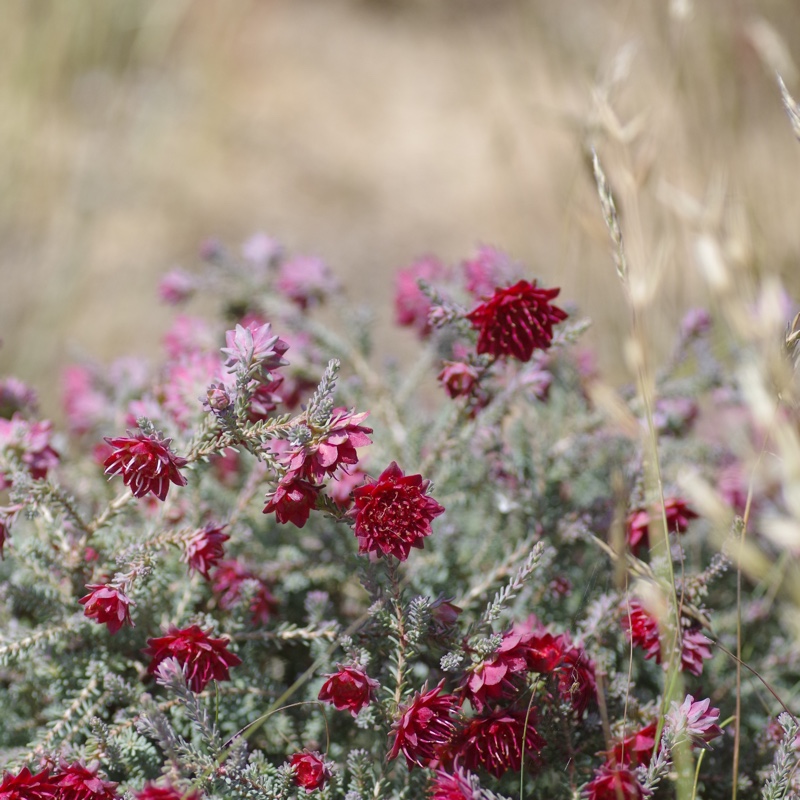
Darwinia Purpurea
Rose Darwinia
Darwinia is native to Western Australia. The species can reach up to 3m in height however, there are many smaller, prostrate species. The leaves are simple, small, needle-like with a leathery texture. The flowers are red with ten stamens.
Contributed by @ranster
-
Partial shade
-
Occasional watering
-
A little frost hardy: 32F (0°C)
-
Moist and free draining
Common name
Rose Darwinia
Latin name
Darwinia Purpurea
type
Evergreen Shrub
family
Myrtaceae
ph
5.0 - 7.0 Acid - Neutral
Plant & bloom calendar
-
Best time to plant
-
When the plant will bloom
full grown dimensions
 0.50 M
0.50 M
0.50 M
0.50 M
Darwinia Purpurea
Darwinia is native to Western Australia. The species can reach up to 3m in height however, there are many smaller, prostrate species. The leaves are simple, small, needle-like with a leathery texture. The flowers are red with ten stamens.
Flowering Season
From Late Winter TO Early Spring
D 'Purpurea' flowers from late winter to early spring. They make fantastic cut flowers. They are also an ideal dried flower, just pick the flowers and hang them in a broom cupboard to dry them so they retain their colour.
Planting
From Early Spring TO Early Spring
Grow these plants in a nice open airy spot. They need a cool root run, so use a good layer of mulch around the root zone, to keep it nice and cool. If these plants are grown in damp, dank conditions they can suffer from powdery mildew.








